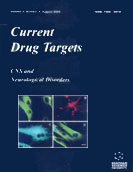Abstract
There is substantial experimental evidence that free radicals are produced in the brain during ischemia, during reperfusion and during intracranial hemorrhage. Removal of pathologically produced free radicals is therefore a viable approach to neuroprotection. There is substantial experimental evidence that free radicals are produced in the brain during ischemia, during reperfusion and during intracranial hemorrhage. Removal of pathologically produced free radicals is therefore a viable approach to neuroprotection. Ebselen was a modestly effective neuroprotectant in a rat transient middle cerebral artery occlusion (MCAO) model when given before the start of ischemia, but not when the insult was severe. Data from the permanent MCAO model and an embolic stroke model suggested a bell shaped dose-response curve. The weak preclinical profile may explain the lack of success in clinical trials. Preclinical data on tirilazad in animal models of acute ischemic stroke are neither comprehensive nor consistent. There was little evidence of efficacy in permanent MCAO or when the drug was given several hours post-occlusion. This may explain the negative clinical trials as these did not target patients likely to reperfuse and treatment started several hours after stroke onset. While preclinical data on subarachnoid hemorrhage demonstrated an attenuation of vasospasm the clinical data were inconsistent. There is very limited published preclinical data on edaravone but it has been approved in Japan as a neuroprotectant for the treatment of stroke. Evidence is based on a single placebo controlled trial in a relatively small number of patients. The status of possible development of edaravone outside of Japan is not known. NXY-059 has been found to be a very effective agent in transient and permanent MCAO and thromboembolic models of acute ischemic stroke. Its preclinical development has been governed by adherence with the recommendations of the Stroke Therapy Academic Industry Roundtable (STAIR) group and is now being investigated in Phase III clinical trials using a therapeutic time window and plasma concentrations that are effective in rat and primate models of stroke.
Keywords: Ischemic stroke, hemorrhagic stroke, subarachnoid hemorrhage, cerebral ischemia, stroke, edaravone, tirilazad, ebselen, nxy-059, free radicals
 9
9

















